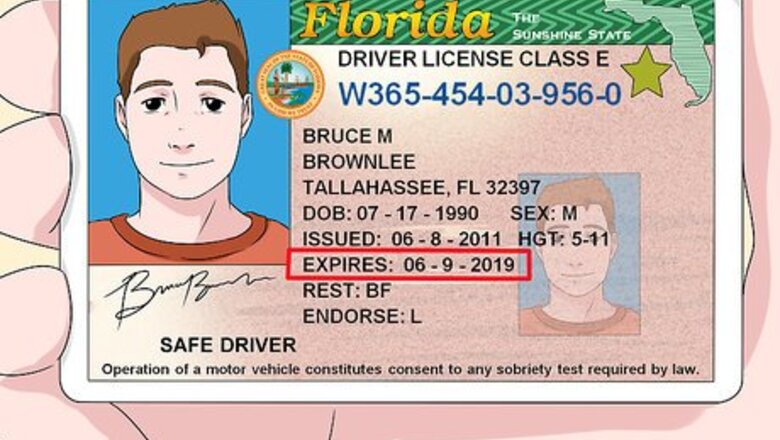
views
Gathering Your Paperwork
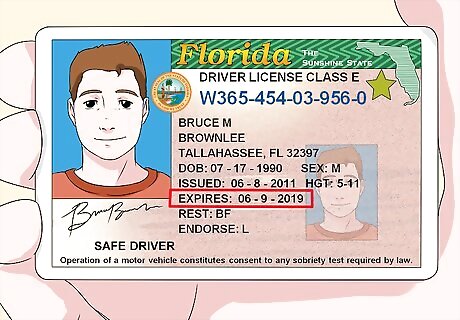
Check your Florida license. You can’t register a car in Florida unless you have a valid Florida ID, so make sure your card is updated and unexpired. If you’ve just moved to Florida from another state, have your old license transferred over. You can register a car in your name if you only have a permit, but you have to be at least 18 years old.
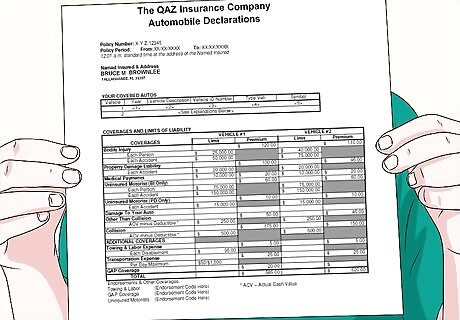
Make sure you have Florida insurance for your car. Your car will need to be insured in the state of Florida before you register it. Talk to your insurance agent or add a policy online to have your insured. You’ll need to bring proof of insurance to the DHSMV, so make sure you have a printed copy of your policy that includes the VIN and your policy number.
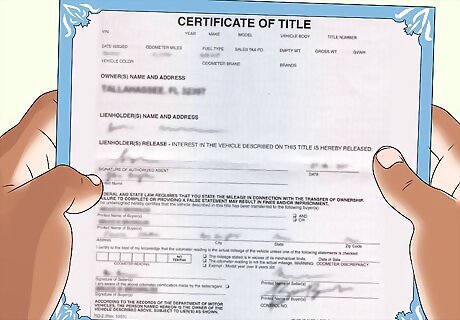
Bring or apply for your car’s title. If you already have the car titled in your name, bring the title with you when you register it. If you don’t, you can apply for the title and registration at the same time in the state of Florida. The only additional paperwork you need is an application for a car title, which is available at the DHSMV.
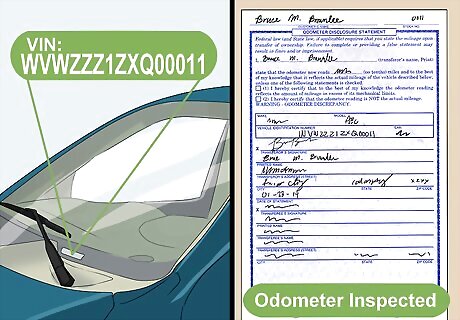
Have your car’s VIN and odometer inspected. Florida law requires that you have the vehicle inspection number and odometer reading certified if you buy a new car or bring an out-of-state car into Florida. You can get an inspection form from any Florida DHSMV office or website. Police officers, military officers, car dealers, and notary publics can verify your car’s VIN and odometer readings. Some DHSMV offices will perform the inspection for you, but not all of them do it. Be sure to ask first. You can go to any police station or military base and ask for an inspection, but you have to have the form with you.
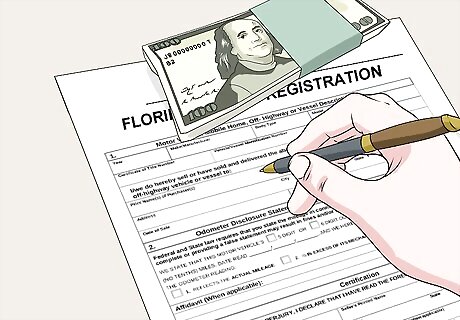
Bring cash or a major credit card to pay the registration fee. Registration fees in Florida vary by the weight of the car and whether or not it’s from out of state. Most new registrations in Florida are $225, but new cars and leases may be subject to sales taxes and other fees.
Visiting the DHSMV
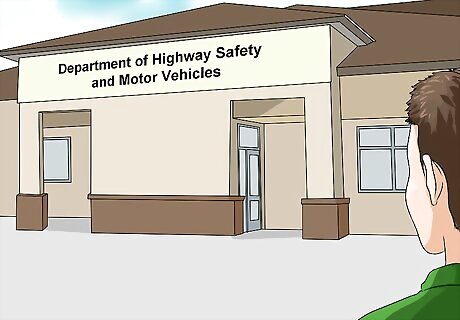
Locate the nearest DHSMV in your county. It’s important to register your car in the county you actually live in. Check the DHSMV website for a list of locations in your county, and choose the one closest to you.
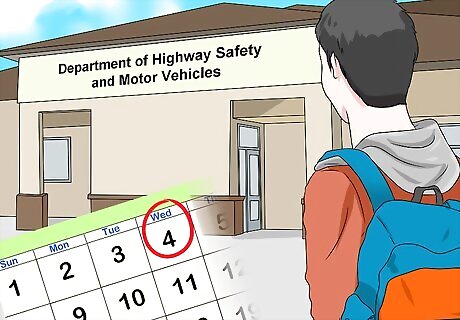
Visit in the morning in the middle of the week if possible. If you can time your visit to avoid crowds, do it! The DHSMV can get very busy. If you have to visit during a busy time like late afternoon or Saturday, make sure you have time to wait. Some locations let you make an appointment online or by calling the location directly.

Check in at the front desk. Most DHSMV offices require you to check in at the front desk before waiting. They’ll ask you what you’re there for and take a quick look at your paperwork to make sure it’s all together.
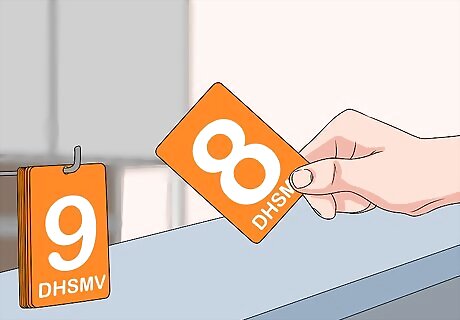
Take a number. You’ll be assigned a number when you finish checking in. Wait until you’re number is called. Don’t worry if the numbers seem to be going out of order--they’re separated into different categories to make the lines move faster.

Go to the window when your number is called. Each number will be assigned a window. When yours is called, go to the clerk’s window that matches your number. They’ll be the one to take care of your registration.
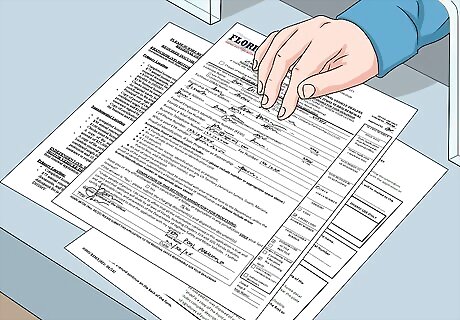
Present your registration documents to the clerk. Give the clerk all your paperwork and the money for your fee. They’ll handle the registration for you. You probably won’t need to do anything but wait for a few minutes and sign your paperwork. Then, you'll be ready to go home!
Finalizing Your Registration

Wait for the final registration to arrive in the mail. Some counties give you the full registration paperwork at the DHSMV, but others send it to you in the mail later. If you have to wait for yours, keep an eye on the mailbox! Meanwhile, you can keep your DHSMV receipt in your car for proof of registration.
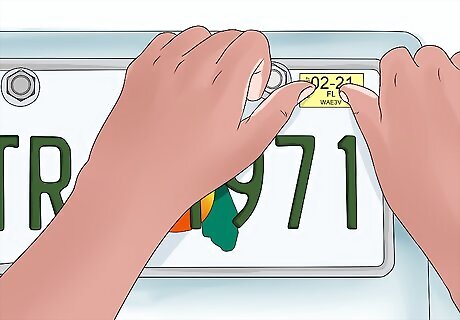
Put the registration sticker on the top right corner of your license plate. Your registration will come with a little sticker with the year written on it. Put the sticker on the top right corner of your plate to avoid being pulled over. Florida only requires a rear license plate, so you’ll only have one sticker.
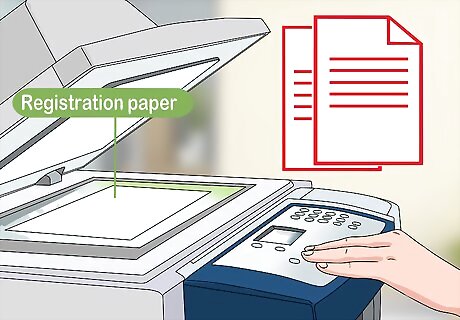
Make a copy of your registration for safekeeping. It’s a good idea to have a backup copy of your registration in case it’s lost or stolen. Often, your registration will come with multiple copies, but if it doesn’t, make a photocopy for your personal records.
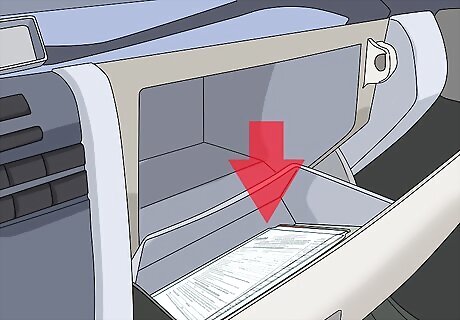
Place the registration in your car. Your actual registration should be put in your car so you can show it in case you’re pulled over. Most people keep theirs in the car’s glove compartment, but anywhere safe and dry will work.














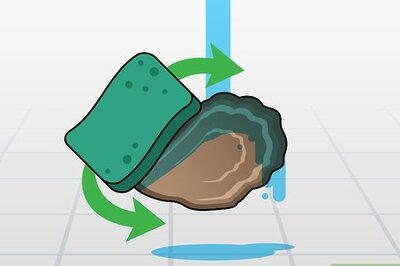





Comments
0 comment